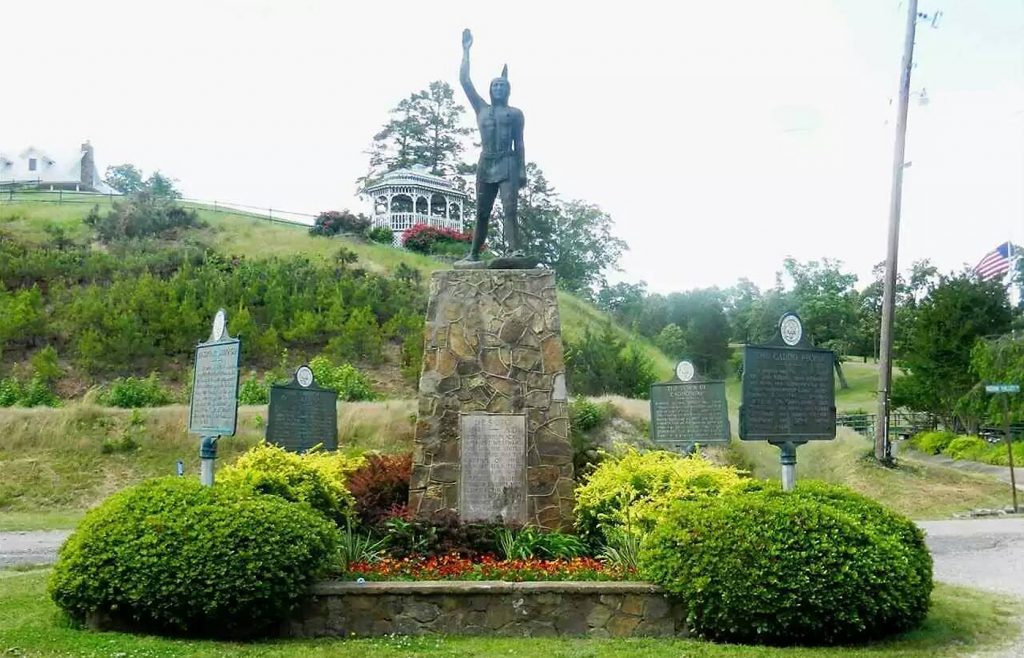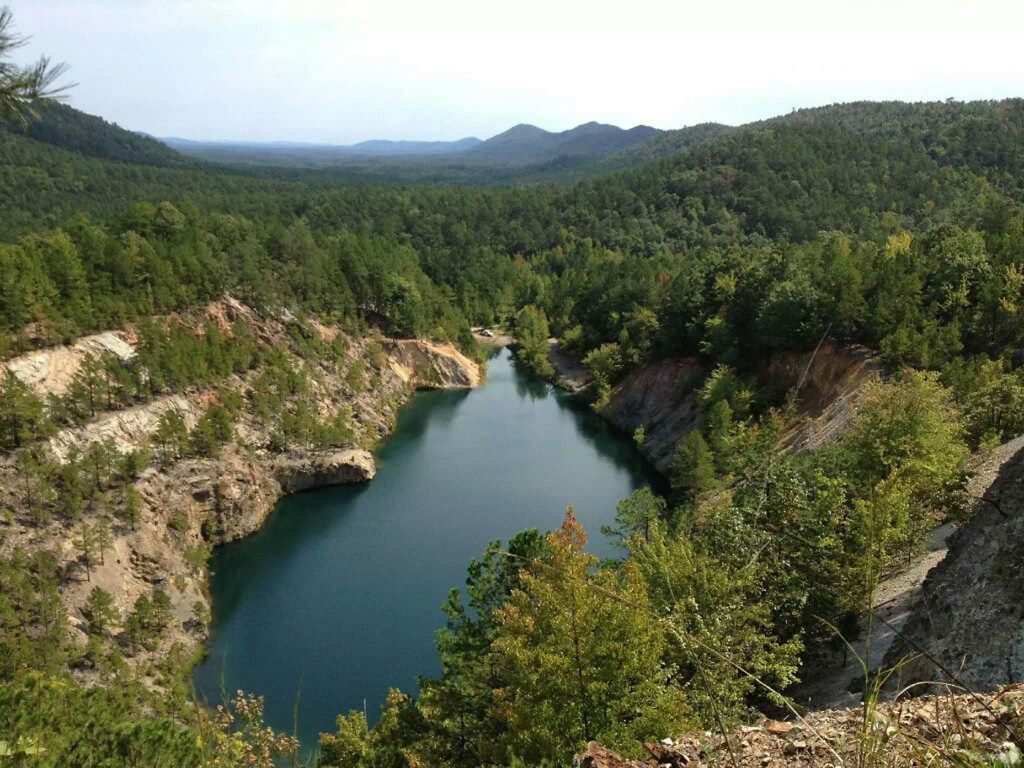
Last week, a friend and I went to Arkansas in search of quartz crystals. We came back with about 300 pounds of them. The car sagged on its springs all 12 hours north from the quartz mines of Montgomery County. Now I’m hoping to sell some on eBay to pay for all that four-dollar gas.
“Have you ever found a place that you’ve never even heard of before, yet feels like home? Well, that’s what Caddo Gap, Arkansas, felt like to me. Maybe it was the time of day when we drove through town, just before the sun dipped behind the mountains and the valleys were full of violet shadows, but I swear, there is something magical about that place. Some of the world’s largest deposits of quartz are there, but not many people. Land is cheap. There’s nothing happening, no resorts, no retirement communities, no casinos. I imagine Montgomery County isn’t more populated than it was a hundred years ago.
Four hundred and fifty-seven years ago, in 1541, Hernando de Soto arrived in Caddo Gap, looking for the fountain of youth. Instead, he found fierce Tula Indians, who fought the Spaniards with arrows and rocks. Because their horses and guns and steel breastplates gave them a tremendous advantage, the Spanish were able to slaughter quite a few Tulans, so the next day the Tulans sent in their women. When the Spanish took one look at a bunch of angry, rock throwing, screaming half-naked women, they turned tail and retreated to the Ouachita River valley to lick their wounds.

The area is home to Hot Springs, where FDR stopped once in 1936. The highways are lined with rock shops, and as in all Krystal Kulture, legends abound of crystal caves where inter-dimensional beings use all that quartz for travel.
The Tulans seem to have been mostly wiped out by disease in the early 17th century, probably an inadvertent gift of the Spaniards, but there’s a lot of evidence that they were closely related to the Mayans, found thousands of miles south in what is now Mexico and Guatemala. I don’t know how they traveled so far. There are people who call themselves Tulans in Tibet, and Hopi tribes in Arizona have found they have the same weaving patterns and styles as people in Mongolia, who strongly resemble them.
What was it like getting around before, say, 1600? I imagine you walked. With enough determination, you can mosey from Iowa to the bottom of South America in about four years. Back then, you didn’t have to worry about cars whizzing by as you trudged the shoulder of the road, but finding food and water must have been a constant source of anxiety.
Again, they did all this without antidepressants, psychotherapy, or state certification. Hopefully, your family members taught you how to hunt, gather, and cook, and that was without the benefit of Rachel Ray or the Galloping Gourmet. Freed from the necessity to spend eight hours a day in the classroom, staring at a state-certified teacher, you might have had the chance to learn a wide range of things. If you had, then the six-month or three-year journey on foot might have been not only informative but fun.
All this is still available to us, any time we feel like letting go of the television remote, dropping the cell phone, and making space in our lives for the things that really matter to us. Again, it’s an individual choice. If you dig playing video games, then by all means, play on. There’s nothing wrong with modern life if you enjoy what it has to offer. But it’s an awfully expensive game, and the grease that makes the whole shebang slide along is fast running out. So the choice really boils down to a cost-benefit analysis.
Like my earlier ravings about the wonders of Nicaragua, I feel that the things that attract me exist in a higher concentration in Caddo Gap, Arkansas, than the Mall of America, Minnesota. I imagine I’m not alone in this preference. If you watch enough TV, you’d swear that every American’s idea of a good vacation is an expensive visit to Camp Snoopy or Disneyworld, but really those destinations only appeal to people of a certain economic status with children of a certain age. Corporations like to loudly and visibly pat themselves on the back when they send a dying child on a free trip to Orlando because it’s Big Money singing the praises of itself, using a sick child as choirboy.
You can buy a whole book of Dan Coffey’s essays online: My World & Welcome To It.
